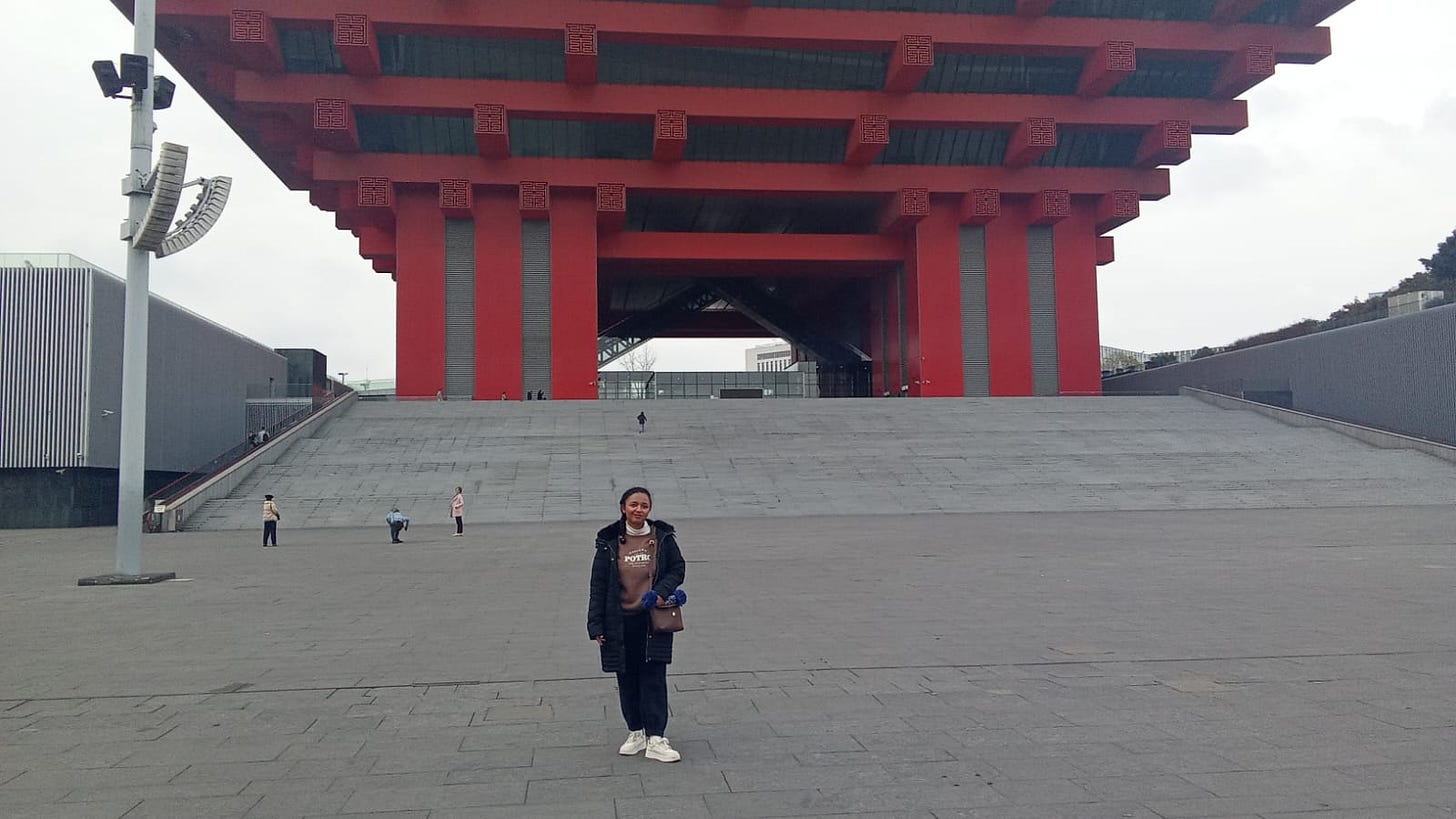My First Time in Shanghai & the Art of Wu Changshuo
This trip wasn’t just about sightseeing—it was about feeding my imagination, understanding China’s rich artistic heritage, and finding new ways to connect Web3, AI, and traditional art in my work.
Hi guys! As we step into the second month of the year, the excitement of new beginnings and resolutions starts to settle. This is the time when life naturally sorts out who is truly committed to their goals and who isn’t—so keep the momentum going. Now is not the time to slow down.
I love diving deeper into the meaning behind things, and February is a month rich in cultural significance. The name "February" comes from the Latin word februum, meaning "to purify," which originates from the ancient Roman festival of Februalia—a month-long celebration of purification and atonement. Maybe this month serves as an invitation to declutter—not just physically, but mentally and emotionally as well. It’s a chance to refine our thoughts, priorities, and relationships, keeping only what helps us grow and letting go of what doesn’t.
First Time in Shanghai: A Journey Through Art and Inspiration
Last week, I visited Shanghai for the first time. When I think of Shanghai, I see it as a hub of fashion, culture, and creativity—a city brimming with inspiration. Many great artists and thinkers have emerged from here, and as a content creator, I believe creativity doesn’t exist in a vacuum. You have to feed your imagination, experience new things, and immerse yourself in art. That’s why my go-to spots in any new city are:
Museums, to understand the artistic soul of a place.
Gardens, to find peace of mind and process my thoughts.
Cafés & Streets, to observe daily life and the local standard of living.
Public gardens, in particular, are fascinating to me. They reveal so much about a city's character—its relationship with nature, its pace of life, and the way people interact with their surroundings. Would you agree?

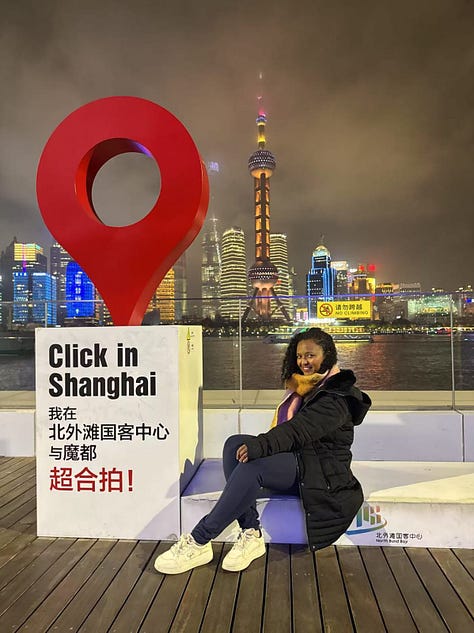
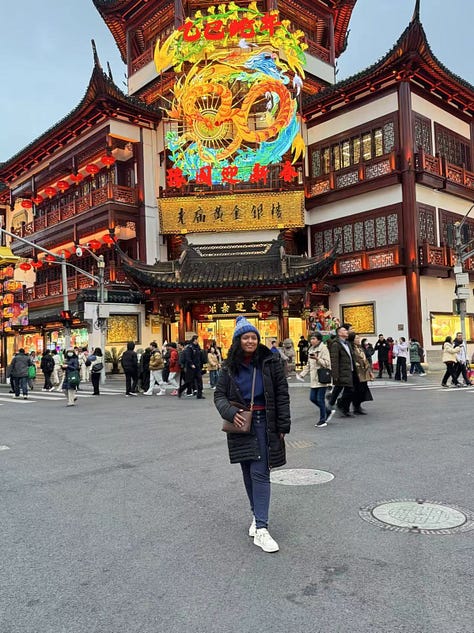


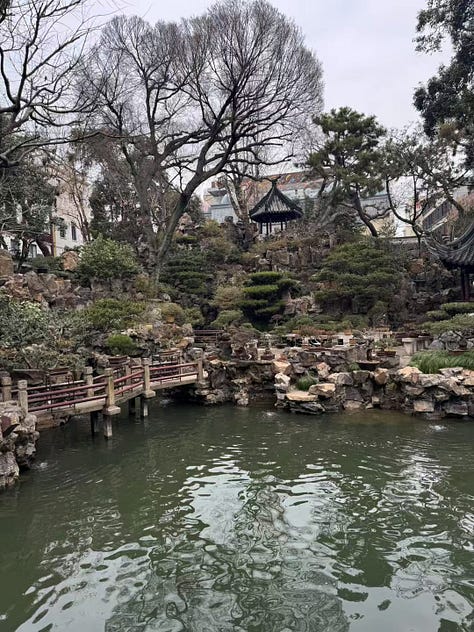
Discovering Wu Changshuo: Master of Chinese Calligraphy, Painting, and Seal Carving
While in Shanghai, I visited the China Art Museum, where I was introduced to the incredible work of Wu Changshuo, a renowned master of Chinese calligraphy, painting, and seal carving. I wanted to share a bit about his legacy to enrich your culture générale.
Who Was Wu Changshuo?
Born in 1844 in Zhejiang, Wu Changshuo was a leading figure in the Shanghai School of painting, blending tradition with innovation. His distinct style, known as the "Wu style," revitalized classical Chinese painting, especially bird-and-flower motifs, characterized by light brushstrokes and soft colors.
What captivated me most about his work was its lightness—both in technique and emotion. His paintings feel harmonious, offering just the right amount of visual information without overwhelming the viewer. The delicate portrayal of birds and flowers gives a sense of beauty in the ephemeral and the fragile, which deeply resonated with me.
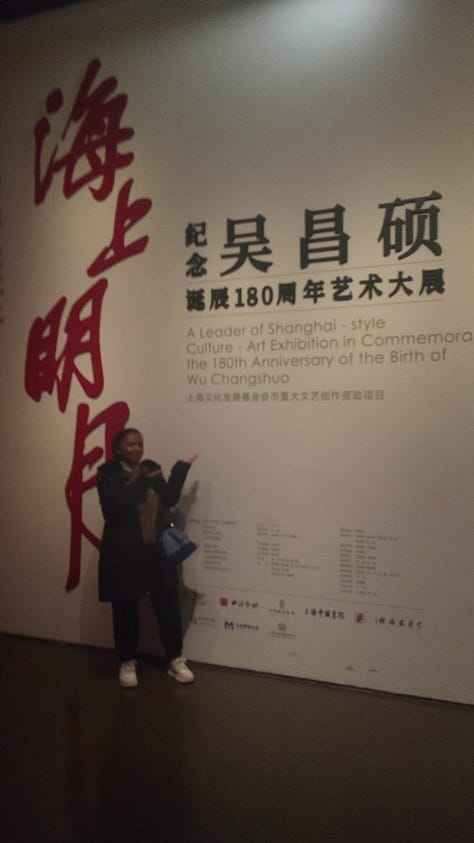



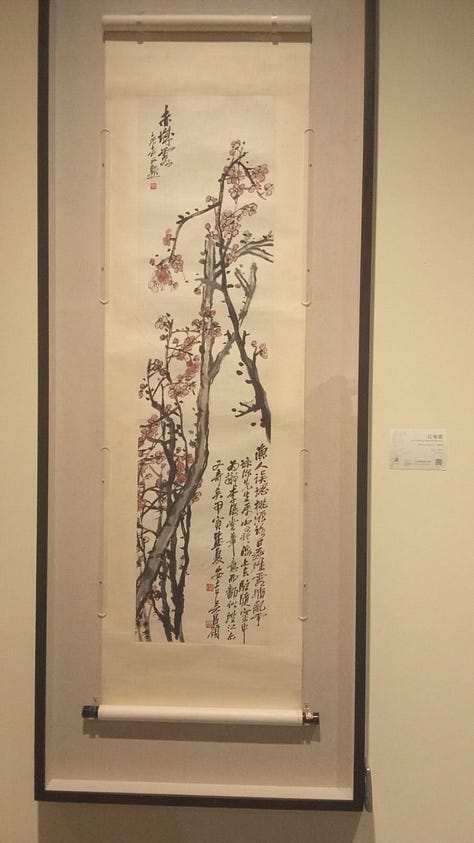
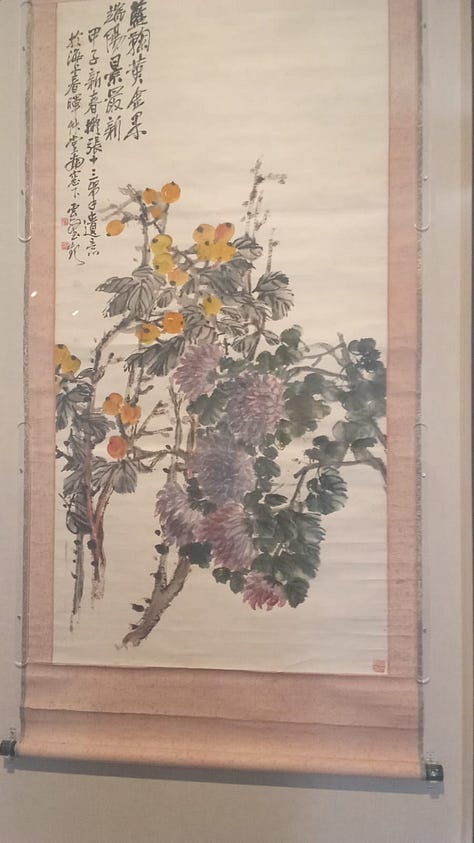
Key Aspects of Chinese Art you need to know
1. Calligraphy
Cultural Significance: Calligraphy in China is considered one of the highest forms of art, embodying the artist’s personality and philosophy.
Utility: Historically, mastering calligraphy was essential for scholars, influencing education, governance, and artistic expression.
2. Painting
Cultural Heritage: Chinese painting emphasizes nature and symbolism, evolving with dynastic shifts in artistic trends.
Utility: Paintings often incorporated poetry, creating multi-layered meanings beyond mere visual aesthetics.
3. Seal Carving
Historical Context: Practiced for over 3,000 years, seal carving was initially a mark of authentication for emperors and officials.
Cultural Value: Seals blend calligraphy and artistic expression, transforming a functional object into a work of art.
Wu Changshuo’s Legacy
Wu’s impact extends far beyond his lifetime. As a leader of the Xiling Seal Art Society, he fostered a community of artists dedicated to preserving and evolving traditional arts. His influence shaped generations of Chinese artists, and his work is now displayed in prestigious institutions like the Metropolitan Museum of Art and the National Gallery of Victoria.
Seeing his paintings reminded me of how much I love art. It took me back to when I was seven, and my mom gave me a biography of Élisabeth Louise Vigée Le Brun, sparking my lifelong passion for creative expression.
I know this blog originally focused on Web3 and DeFi, but more and more, I feel the need to blend art, culture, AI, and technology into my writing. Curiosity and experimentation will guide the direction of this blog, and I hope you’ll enjoy the journey with me.
My Latest AI Art Project & Competition Submission
Beyond exploring traditional art, I’ve been working on AI-generated storytelling. Recently, I participated in the Odyssey Project competition, submitting the same video I created about mindful eating and the importance of our relationship with food. I feel like it still hasn’t reached enough people, and it deserves more recognition.
If you liked the video and want to support my work, please share it with your friends—it would mean a lot to me!
Thank you in advance for your support, and I can’t wait to share more with you soon!
Final Thoughts
How do you keep your creativity alive?
Do you have a favorite artist who has inspired you?
Have you ever visited an art exhibition that left a lasting impression?
Let’s discuss in the comments!
Until next time, stay curious & keep exploring! 🚀🎨





